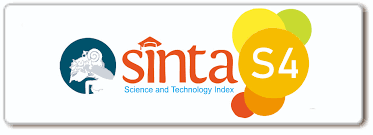Improving Students’ Critical Thinking Skills Through the Application of the Scramble Learning Model
DOI:
https://doi.org/10.31538/adrg.v4i1.1293Keywords:
Scramble, Critical Thinking Ability, FiqhAbstract
The problem underlying this research is the low level of students’ critical thinking skills. One alternative learning that can be applied to improve students' critical thinking skills is the scramble learning model. This research aims to determine how the scramble learning model can improve students’ critical thinking skills in fiqh subjects. The method used in this study is an experimental method with a pretest-posttest control group design research design. The study was conducted at MTs Negeri 2 Mojokerto. This study uses 2 classes, namely class VII E as an experimental class and class VII H as a randomly selected control class. The instrument used was a critical thinking ability test. In this study, quantitative data were analyzed using statistical analysis of the t-test to see an increase in students’ critical thinking skills. Based on the analysis of students' critical thinking test results obtained, the gain score of the experimental class is higher than the control class, which is 133 for the experimental class and 65 for the control class. After knowing the gain score, an independent sample t test was conducted with the result of a sig (2-tailed) value of 0,000 and smaller than 0,05. Thus it can be concluded that there are significant differences.
Downloads
References
Adhikari, D. R., & Shrestha, P. (2022). Knowledge management initiatives for achieving sustainable development goal 4.7: Higher education institutions’ stakeholder perspectives. Journal of Knowledge Management, 27(4), 1109–1139. https://doi.org/10.1108/JKM-03-2022-0172
Ahmad, A., Jafar, M., Hendri, H., Qurba, A.-Q., & Ingriza, R. (2022). Analisis Model Pembelajaran Kooperatif Tipe Scramble pada Pembelajaran Pendidikan Agama Islam. Jurnal Pendidikan Agama Islam Al-Thariqah, 7(2), 503–514. https://doi.org/10.25299/al-thariqah.2022.vol7(2).11523
Anriani, R., Jamaluddin, & Primadoniati, A. (2024). Efektivitas Model Pembelajaran Scramble Berbantuan Powert Point Dalam Meningkatkan Minat Dan Hasil Belajar Kognitif. Jurnal Al-Ilmi: Jurnal Riset Pendidikan Islam, 4(02), 48–62. https://doi.org/10.47435/al-ilmi.v4i02.2242
Dimyati, A., Toenlioe, A., & Adi, E. (2019). Efektifitas Model Pembelajaran Kooperatif Scramble Terhadap Peningkatan Hasil Belajar Mengenal Surah At-Tin Siswa Kelas V. JKTP: Jurnal Kajian Teknologi Pendidikan, 2, 261–267. https://doi.org/10.17977/um038v2i42019p261
Farida, N. R. N., Ma`arif, M. A., & Kartiko, A. (2021). Implementation of the Wahdah Method in Improving Students’ Ability to Memorize the Qur’an. Nazhruna: Jurnal Pendidikan Islam, 4(3), 518–530. https://doi.org/10.31538/nzh.v4i3.1084
Farida, U., Agustini, F., & Wakhyudin, H. (2017). Efektivitas Model Pembelajaran Scramble Berbasis Kontekstual Terhadap Kemampuan Berpikir Kritis Ips Siswa Kelas Iii Sd Negeri Kebondalem 01 Batang. Jurnal Ilmiah Sekolah Dasar, 1(3), 192–199. https://doi.org/10.23887/jisd.v1i3.11840
Faudzan, M. D., & Lutfi, A. F. (2022). Pengaruh Media Pembelajaran Video Dengan Movavi Video Editor Plus Untuk Hasil Belajar Siswa Di Mtsn 3 Kuningan. Ict Learning, 6(2). Retrieved from https://jurnal.upmk.ac.id/index.php/ictlearning/article/view/3541
Fotheringham, A. S. (1997). Trends in quantitative methods I: Stressing the local. Progress in Human Geography, 21(1), 88–96. https://doi.org/10.1191/030913297676693207
Halimurosid, A., Syafe’i.R, & Fathurrohman.A. (2021). Kreatifitas Guru Pendidikan Agama Islam Dalam Meningkatkan Mutu Pembelajaran PAI. TANZHIMUNA: Jurnal Manajemen Pendidikan Islam, 1(1), 19–34. https://doi.org/10.54213/tanzhimuna.v1i1.64
Hidayat, A. W. (2020). Inovasi Kurikulum dalam Perspektif Komponen-Komponen Kurikulum Pendidikan Agama Islam. SALIHA: Jurnal Pendidikan & Agama Islam, 2(1), 111–129. https://doi.org/10.54396/alfahim.v2i1.72
Hoerudin, C. W. (2023). Upaya Meningkatkan Kemampuan Membaca Pemahaman Siswa Pada Pembelajaran Bahasa Indonesia Dengan Metode Scramble. Jurnal Al-Amar: Ekonomi Syariah, Perbankan Syariah, Agama Islam, Manajemen Dan Pendidikan, 4(2), 121–130.
Ilela, N., Laamena, C. M., & Tamalene, H. (2021). Model Pembelajaran Core, Scramble, Hasil Belajar, Dan Operasi Hitung Bentuk Aljabar. Journal of Honai Math, 4(1), 85–100. https://doi.org/10.30862/jhm.v4i1.175
Kango, U., Kartiko, A., & Maarif, M. A. (2021). The Effect of Promotion on the Decision to Choose a Higher Education through the Brand Image of Education. AL-ISHLAH: Jurnal Pendidikan, 13(3), 1611–1621. https://doi.org/10.35445/alishlah.v13i3.852
Kwok, L. A., Jha, S. W., Temim, T., Fox, O. D., Larison, C., Camacho-Neves, Y., … Wang, L. (2023). A JWST Near- and Mid-infrared Nebular Spectrum of the Type Ia Supernova 2021aefx. The Astrophysical Journal Letters, 944(1), L3. https://doi.org/10.3847/2041-8213/acb4ec
Lerche, L. (2012). Quantitative Methods. Elsevier.
Manalu, W., & Siregar, E. Y. (2019). Efektivitas Model Pembelajaran Scramble Terhadap Kemampuan Berpikir Kritis Matematis Siswa Di Smp Negeri 2 Pandan. Jurnal MathEdu (Mathematic Education Journal), 2(02), 93–98.
Minsih, M., & D, A. G. (2018). Peran Guru Dalam Pengelolaan Kelas. Profesi Pendidikan Dasar, 5(1), 20–27. https://doi.org/10.23917/ppd.v1i1.6144
Mubarokah, L., Azizah, U. N., Riyanti, A., Nugroho, B. N., & Sandy, T. A. (2021). Pentingnya Inovasi Pendidik untuk Meningkatkan Kualitas Pendidikan. JIRA: Jurnal Inovasi dan Riset Akademik, 2(9), 1349–1358. https://doi.org/10.47387/jira.v2i9.224
Munir, M. (2009). Kurikulum Berbasis Teknologi Informasi dan Komunikasi. Bandung: Alfabeta, CV. Retrieved from chrome-MUNIR/BUKU/Kurikulum%20Berbasis%20Teknologi%20Informasi%20dan%20Komunikasi.pdf
Nuryanti, L., Zubaidah, S., & Diantoro, M. (2018). Analisis Kemampuan Berpikir Kritis Siswa SMP. Jurnal Pendidikan: Teori, Penelitian, Dan Pengembangan, 3.
Sugiyono. (2010). Metode Penelitlan Kuantitatif, Kualitatlf Dan R&D 8. 0. Bandung: Alfabeta.
Sukmawati, H. (2021). Komponen-Komponen Kurikulum Dalam Sistem Pembelajaran. Ash-Shahabah : Jurnal Pendidikan Dan Studi Islam, 7(1), 62–70. https://doi.org/10.59638/ash.v7i1.403
Sumira, D. Z., Deasyanti, D., & Herawati, T. (2018). Pengaruh Metode Scramble dan Minat Baca terhadap Kemampuan Membaca Pemahaman Siswa Sekolah Dasar. Indonesian Journal of Primary Education, 2(1), 62–71. https://doi.org/10.17509/ijpe.v2i1.11673
Umam, S. (2019). Evaluation Of The Implementation Of Character Education Policy In Madrasah Miftahul Huda, Sungai Malaya Village, Kubu Raya Regency. Nidhomul Haq : Jurnal Manajemen Pendidikan Islam, 4(1), 104–120. https://doi.org/10.31538/ndh.v4i1.247
Widiawati, L. A., & Chandra, F. E. (2018). Colabotration Leaning of Scrambles with JIGSAW To Improve Student Activity and Mathematics Learning Outcomes. Jurnal Axioma : Jurnal Matematika Dan Pembelajaran, 3(2), 140–151.
Downloads
Published
How to Cite
Issue
Section
License
Copyright (c) 2024 Ismawati, Muhammad Abu Bakar, M Afif Zamroni

This work is licensed under a Creative Commons Attribution-ShareAlike 4.0 International License.








